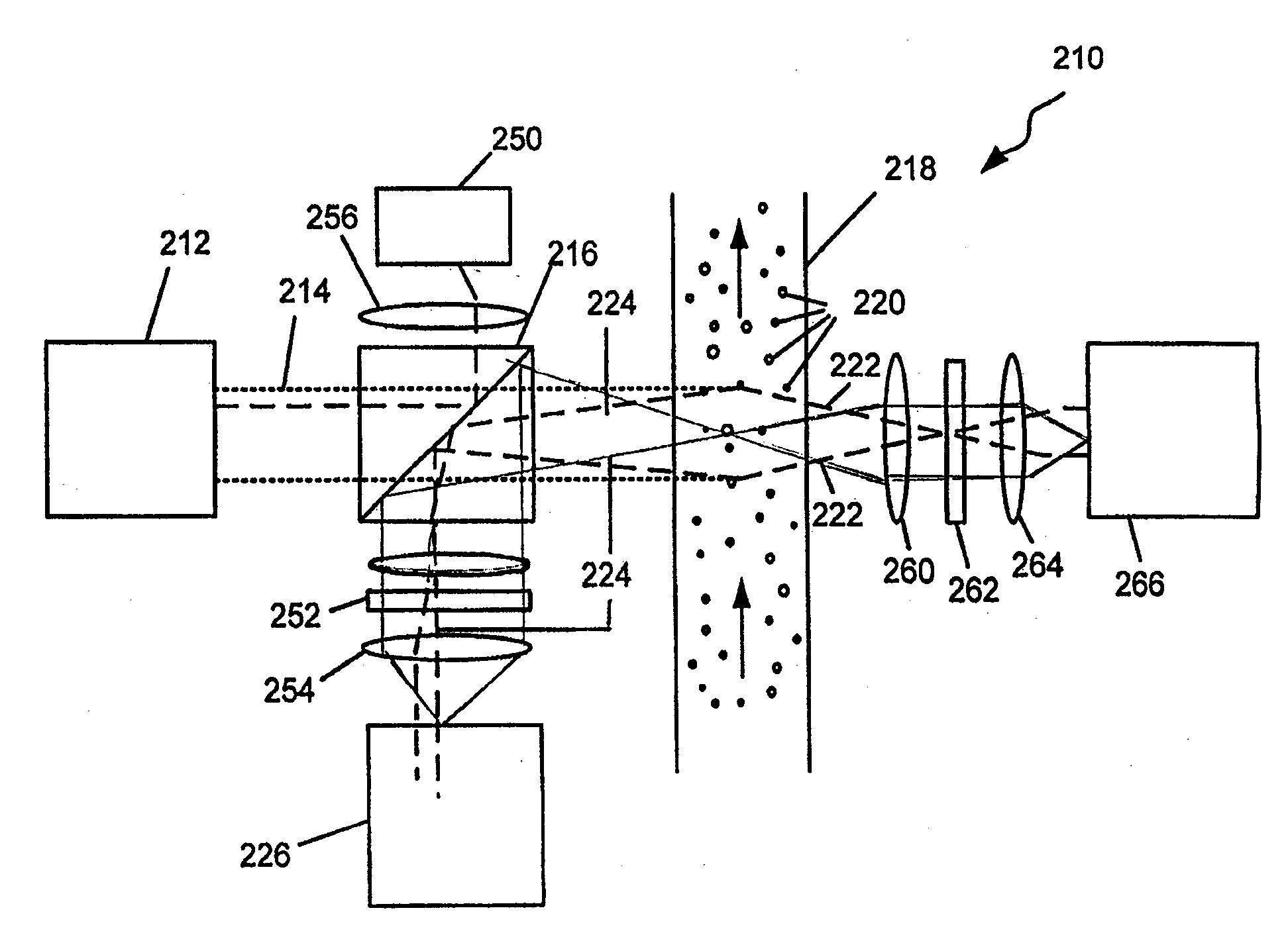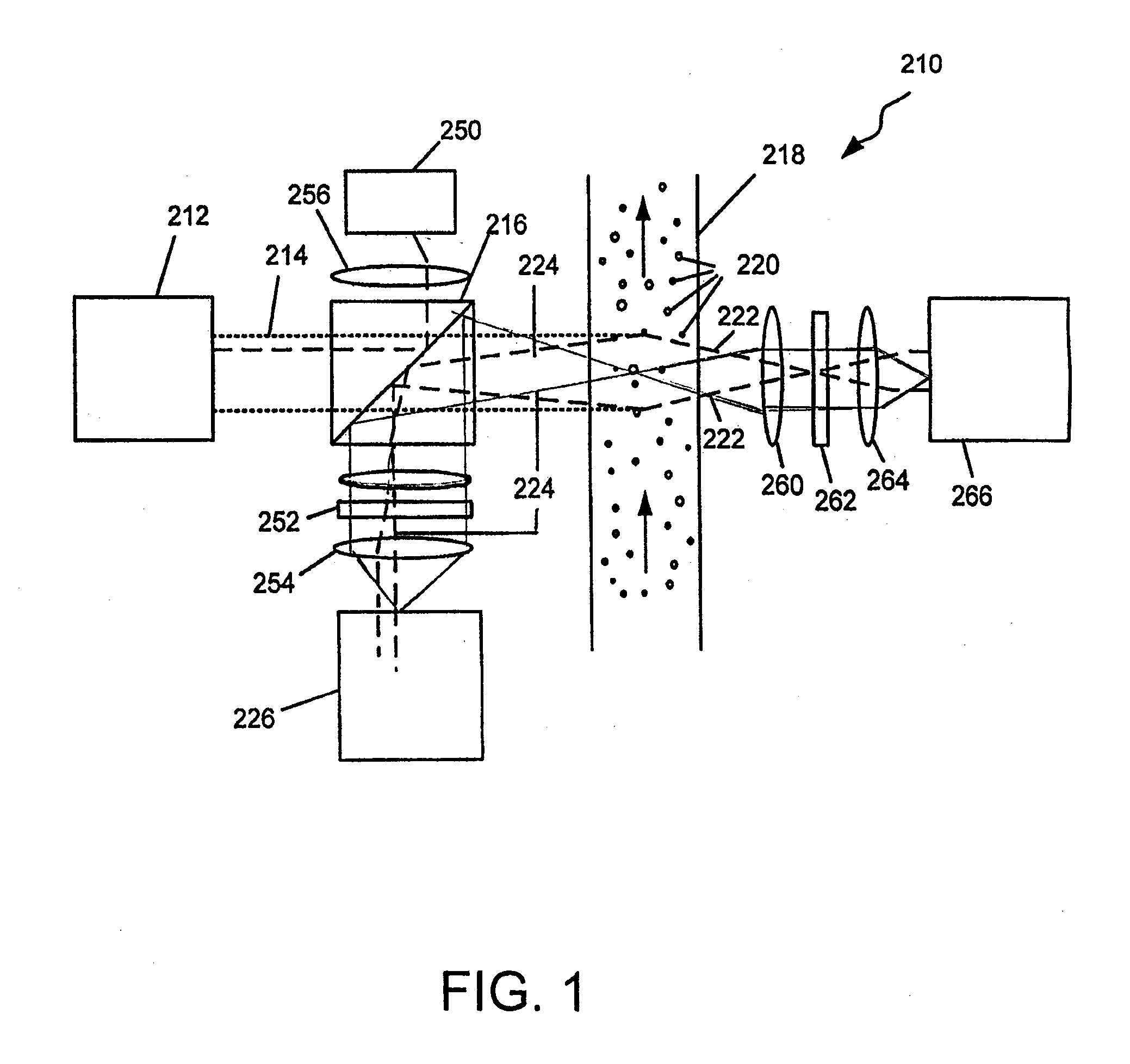Pathogen and particle detector system and method
a detection system and a technology for pathogens and particles, applied in the field of system and method for detecting airborne or waterborne particles, can solve the problems of major difficulty in the instrumentation of laser particle counters, scattering signal must be extracted from incident illumination light source signal, and extremely dangerous weaponized anthrax spores, etc., to achieve backward-enhanced fluorescence
- Summary
- Abstract
- Description
- Claims
- Application Information
AI Technical Summary
Benefits of technology
Problems solved by technology
Method used
Image
Examples
Embodiment Construction
[0020]FIG. 1 is a representation of an optical system for a fluid particle detector system according to a first exemplary embodiment of the invention. This first exemplary embodiment of the system is particularly directed to detect airborne or waterborne bio-terrorist agents deliberately released by terrorists or others, but may also be used in civilian applications to detect harmful levels of other airborne or waterborne particles which may exist naturally such as mold or bacteria, or which may have been accidentally, inadvertently, naturally, or deliberately released, or other industrial applications such as the food and manufacturing industries, as well as clean room applications.
[0021]The term “fluid borne particles” as used herein means both airborne particles and waterborne particles.
[0022]The term “pathogen” as used herein refers to any airborne or waterborne particles, biological agent, or toxin, which could potentially harm or even kill humans exposed to such particles if p...
PUM
 Login to View More
Login to View More Abstract
Description
Claims
Application Information
 Login to View More
Login to View More - R&D
- Intellectual Property
- Life Sciences
- Materials
- Tech Scout
- Unparalleled Data Quality
- Higher Quality Content
- 60% Fewer Hallucinations
Browse by: Latest US Patents, China's latest patents, Technical Efficacy Thesaurus, Application Domain, Technology Topic, Popular Technical Reports.
© 2025 PatSnap. All rights reserved.Legal|Privacy policy|Modern Slavery Act Transparency Statement|Sitemap|About US| Contact US: help@patsnap.com



